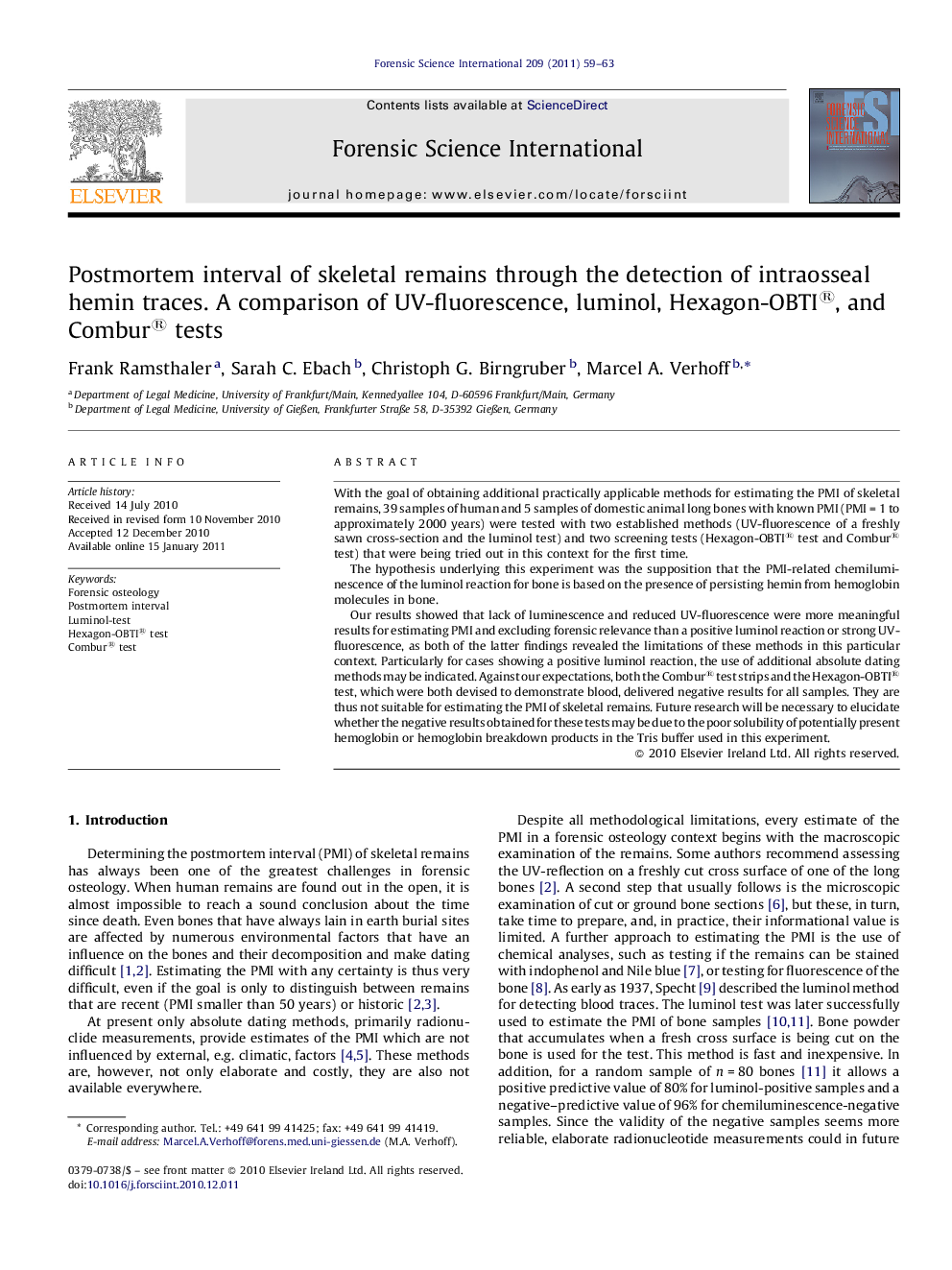| Article ID | Journal | Published Year | Pages | File Type |
|---|---|---|---|---|
| 96781 | Forensic Science International | 2011 | 5 Pages |
With the goal of obtaining additional practically applicable methods for estimating the PMI of skeletal remains, 39 samples of human and 5 samples of domestic animal long bones with known PMI (PMI = 1 to approximately 2000 years) were tested with two established methods (UV-fluorescence of a freshly sawn cross-section and the luminol test) and two screening tests (Hexagon-OBTI® test and Combur® test) that were being tried out in this context for the first time.The hypothesis underlying this experiment was the supposition that the PMI-related chemiluminescence of the luminol reaction for bone is based on the presence of persisting hemin from hemoglobin molecules in bone.Our results showed that lack of luminescence and reduced UV-fluorescence were more meaningful results for estimating PMI and excluding forensic relevance than a positive luminol reaction or strong UV-fluorescence, as both of the latter findings revealed the limitations of these methods in this particular context. Particularly for cases showing a positive luminol reaction, the use of additional absolute dating methods may be indicated. Against our expectations, both the Combur® test strips and the Hexagon-OBTI® test, which were both devised to demonstrate blood, delivered negative results for all samples. They are thus not suitable for estimating the PMI of skeletal remains. Future research will be necessary to elucidate whether the negative results obtained for these tests may be due to the poor solubility of potentially present hemoglobin or hemoglobin breakdown products in the Tris buffer used in this experiment.
